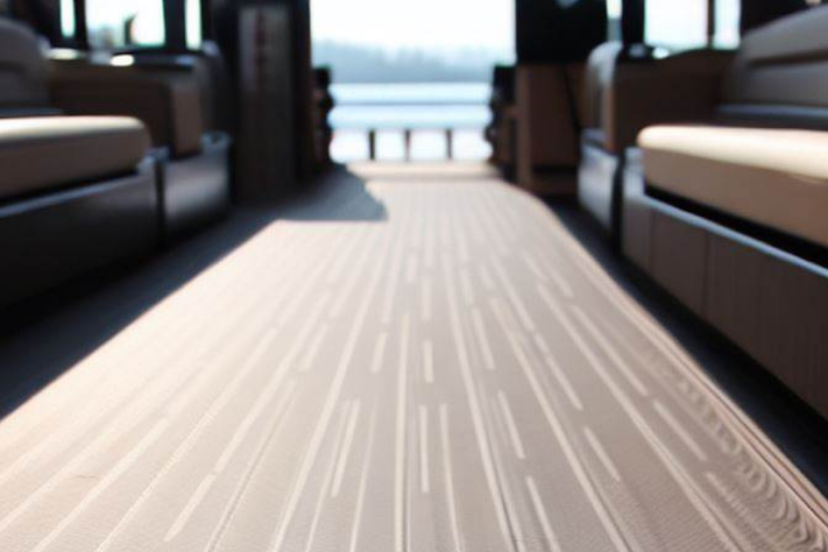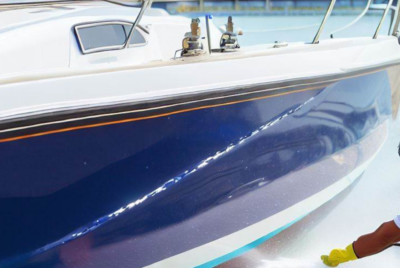When it comes to pontoon boats, one crucial aspect that often gets overlooked is the flooring. However, the right choice of pontoon boat flooring can greatly enhance your boating experience. From ensuring safety and comfort to adding a touch of style, the flooring plays a significant role. In this article, we’ll explore the importance of pontoon boat flooring and provide helpful suggestions to guide you in selecting the ideal flooring option.
Importance of Pontoon Boat Flooring
A well-chosen pontoon boat flooring offers several advantages. Firstly, it contributes to the overall comfort of your boating adventures. Whether you’re relaxing with friends or enjoying water activities, a comfortable flooring surface makes a noticeable difference. Additionally, the right flooring enhances safety by providing traction and reducing the risk of slips and falls.
Moreover, flooring is a crucial design element that adds aesthetic appeal. It can transform the look and feel of your boat, creating a more inviting and enjoyable atmosphere. So, let’s dive deeper into the factors to consider when selecting pontoon boat flooring.
Factors to Consider for Pontoon Boat Flooring
1. Material Types
The choice of flooring material is key to achieving the desired functionality and style. Some popular options include marine carpet, vinyl flooring, synthetic teak, and rubber flooring. Each material has its unique characteristics, advantages, and drawbacks. Also consider future installations like
grills and accessories as part of the floor plan.Understanding these factors will help you make an informed decision.
2. Durability and Maintenance
Durability is an essential aspect to consider when selecting pontoon boat flooring. You want a flooring option that can withstand the harsh marine environment and frequent use. Additionally, the maintenance requirements of the flooring material should align with your preferences and lifestyle. Some materials may require more upkeep than others, so choose accordingly.
3. Safety and Comfort
Safety should be a top priority when selecting pontoon boat flooring. Look for materials that offer excellent traction, even when wet, to minimize the risk of accidents. Comfort is equally important, especially if you spend long hours on your boat. Consider materials that provide cushioning and a pleasant underfoot feel.
Popular Pontoon Boat Flooring Options
1. Marine Carpet
Marine carpet is a classic and popular choice for pontoon boat flooring. It offers a comfortable surface and excellent traction. Marine carpet comes in various colors and styles, allowing you to customize the look of your boat. Installation is relatively straightforward, and with proper maintenance, marine carpet can last for years.
2. Vinyl Flooring
Vinyl flooring is a versatile and durable option for pontoon boats. It is resistant to water, UV rays, and stains, making it suitable for the marine environment. Vinyl flooring comes in a wide range of patterns and textures, allowing you to achieve the desired aesthetic. It’s easy to clean and requires minimal maintenance, making it a convenient choice.
3. Synthetic Teak
Synthetic teak is a premium alternative to traditional teak flooring. It offers the timeless beauty of real teak without the high maintenance requirements. Synthetic teak is highly durable, resistant to fading, and easy to clean. It provides an elegant and luxurious look to your pontoon boat, enhancing its overall appeal.
4. Rubber Flooring
Rubber flooring is a practical and versatile option, particularly for fishing and water sports enthusiasts. It offers excellent shock absorption and provides a non-slip surface, even when wet. Rubber flooring is durable, easy to clean, and can withstand heavy use. It is available in various colors and textures, allowing you to customize your boat’s appearance.
Installation Process
Installing typically involves removing the old flooring, preparing the surface, and installing the new material. The specific installation process may vary based on the chosen flooring material. It is recommended to follow the manufacturer’s guidelines and seek professional assistance if needed.
Here are some general steps to consider:
1. Remove the old flooring:
Carefully remove the existing flooring, ensuring all debris and adhesive residue are cleared.
2. Prepare the surface:
Thoroughly clean and dry the pontoon deck. Repair any damaged areas and ensure the surface is smooth and level.
3. Measure and cut:
Take precise measurements of the deck and carefully cut the new flooring material according to the dimensions.
4. Install the flooring:
Begin laying the flooring from one end, aligning it properly. Depending on the material, you may need to apply adhesive or use a snap-in or interlocking system for installation. Follow the recommended installation method for the specific flooring type.
5. Secure and trim:
Ensure the flooring is securely fastened to the deck. Trim any excess material along the edges for a neat and finished look.
Conclusion
Choosing the right pontoon boat flooring is essential for a comfortable, safe, and visually appealing boating experience. By considering factors such as material types, durability, safety, and comfort, you can make an informed decision. Whether you opt for marine carpet, vinyl flooring, synthetic teak, or rubber flooring, each option has its unique benefits. Follow the installation process carefully or seek professional help to ensure a seamless and successful flooring upgrade.
FAQs
1. Is pontoon boat flooring installation a DIY project?
While it is possible to install pontoon boat flooring yourself, it is recommended to seek professional assistance for precise and professional results.
2. How often should pontoon boat flooring be replaced?
The lifespan of pontoon boat flooring depends on various factors, such as the material chosen, usage, and maintenance. It’s advisable to inspect the flooring regularly and replace it when signs of wear and tear become noticeable.
3. Can I use pontoon boat flooring in saltwater environments?
Yes, many flooring options are suitable for saltwater environments. However, it’s important to choose materials specifically designed for marine use and follow proper maintenance practices to prevent corrosion and damage.
4. Can I install new pontoon boat flooring over the existing one?
In some cases, it may be possible to install new flooring over the existing one. However, it’s crucial to assess the condition of the old flooring and ensure a proper and secure installation without compromising safety or structural integrity.
5. How do I maintain pontoon boat flooring?
Maintenance requirements vary depending on the flooring material. However, general maintenance includes regular cleaning with mild soap and water, avoiding harsh chemicals, and promptly addressing any spills or stains.
Remember, selecting the right type can significantly enhance your boating experience, providing comfort, safety, and style. Choose the option that best suits your needs and preferences, and enjoy cruising the waters with confidence and style.
*We may earn a commission from purchases made through our links, at no cost to you. This does not affect our product recommendations. Please see our disclosure to learn more.



